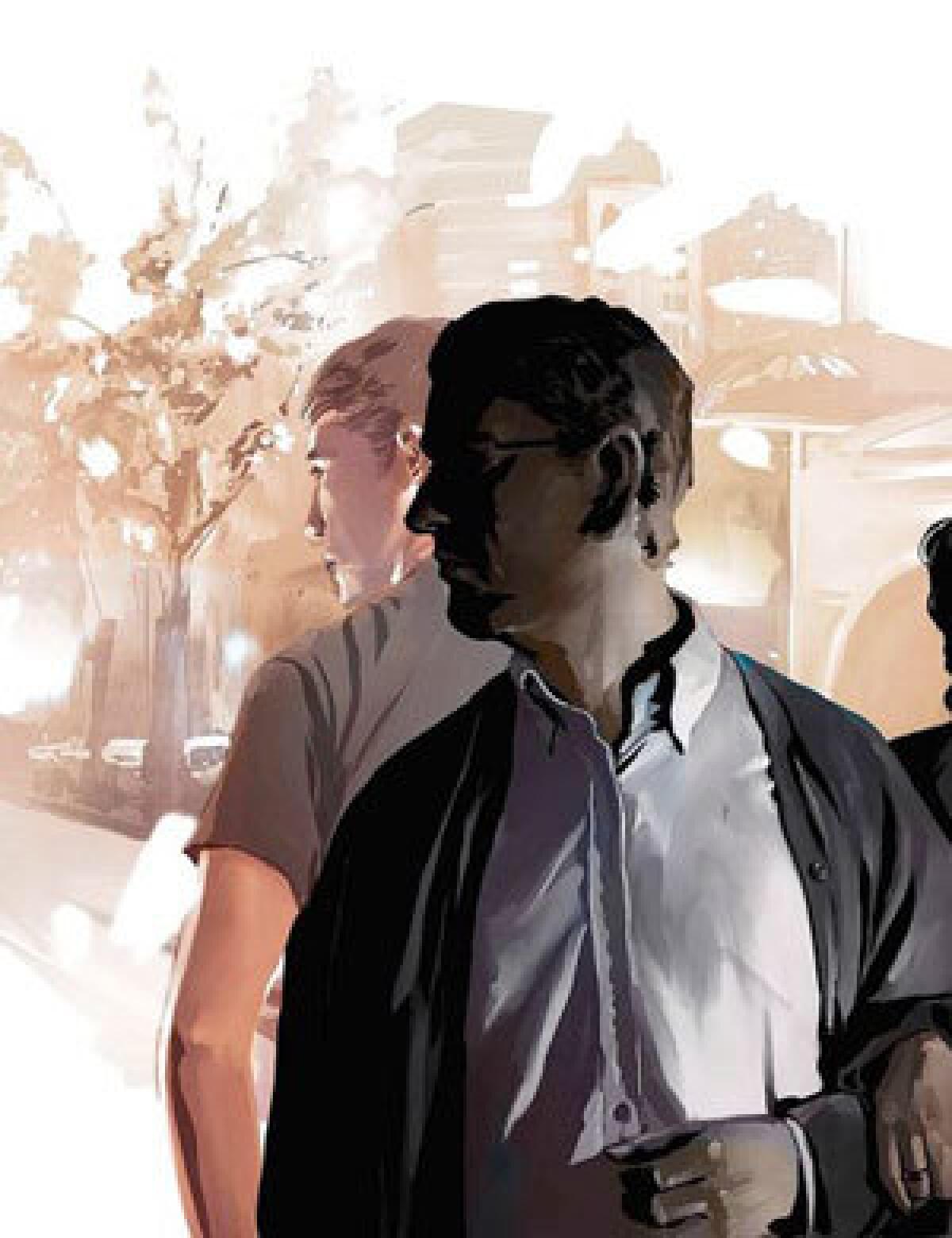Book review: ‘By Nightfall’ by Michael Cunningham

By Nightfall
A Novel
Michael Cunningham
Farrar, Straus and Giroux
238 pp., $25
Revolving around Peter and Rebecca Harris — fortysomething aesthetes in Manhattan’s SoHo, he an art dealer and she the editor of an independent art journal — Michael Cunningham’s “By Nightfall” wants to be a novel of ideas, an inquiry into the relationship between beauty and meaning, but it can’t sustain the weight of its own self-consciousness.
Partly, that’s because of Peter, who is an empty vessel, “a small figure on an undistinguished corner in Manhattan … waiting politely for a train that in all likelihood is never going to come.” Partly, it’s the fault of Mizzy, Rebecca’s troubled, and much younger, brother, a 23-year-old with a drug problem and a talent for seduction who throws the Harrises’ ordered world into disarray. But even more, it has to do with what we expect from Cunningham, who has worked this sort of territory deftly over the years.
His 1998 novel “The Hours” — which won a Pulitzer Prize — is built entirely around another novel, Virginia Woolf’s “Mrs. Dalloway,” while “Specimen Days” (2005) uses the writing of Walt Whitman as a starting point. The goal, it would seem, is to investigate, in the form of a novel, the way art transforms us, or, in the case of Peter, fails to transform us, fails to elevate us beyond the realities of daily life. “And yet,” Cunningham writes of the work created by one of Peter’s clever contemporary artists, “it gives Peter nothing. Not now. Not today. Not when he needs … more.”
In some sense, that’s a vivid expression of Thoreau’s “quiet desperation,” although Cunningham appears to have gotten the transcendentalist impulse out of his system with “Specimen Days.” Instead, the animating spirit here is Thomas Mann, or more specifically “Death in Venice,” Mann’s 1912 novella about a middle-aged writer named Gustav von Aschenbach, who becomes infatuated with Tadzio, a young Polish boy. For Aschenbach, the fixation is all-consuming; in the end, it strips him of everything — his dignity, his self-respect, even his life. And yet, Mann insists, it is not Aschenbach’s self-delusion, his degradation, that is most important, but more his vulnerability, which causes him to unravel in ways that are both painful and universal in the face of beauty and the relentlessness of time.
Cunningham, clearly, has something similar in mind with “By Nightfall” — to examine, through Peter’s increasingly conflicted relationship with Mizzy, how the pillars of a life, so apparently stable, can collapse. Unlike Aschenbach, though, Peter is hardly a tragic figure: There is no sense of grandeur even in his lies. Rather, he is a midlevel dealer, “never graduated to the majors … respected but not feared.” He worries about his calories and the gray in his hair, the college-age daughter who will not speak to him, the lack of passion in his marriage. Passion, in fact, seems essentially alien to him, which renders his obsession with it one of the book’s most jarring disconnects.
How are we to react, after all, when Cunningham tells us, “This is what Peter wants from art. Isn’t it? This soul sickness; this sense of himself in the presence of something gorgeous and evanescent, something (someone) that shines through the frailty of flesh.” Peter may believe that he wants to be transported, that like Manet, whose mistress Victorine Meurent became his muse and model, he aspires to “a beauty cleansed of sentimentality.” But his whole life speaks to the opposite, to the pedestrian nature of his soul. Even with Mizzy, who recognizes his brother-in-law’s weakness on an animal level and knows how to exploit it, Peter is “a comic character. How had it happened that he’d imagined, even briefly, otherwise? He’s the capering fool on whom others play tricks. He’s an easy mark, all vanity and pomade.”
Such a passage echoes the tragedy of Aschenbach. Yet the danger of rooting one novel so directly in another can be in the associations it stirs up. One reason “The Hours” worked was its audacity; to build a novel around “Mrs. Dalloway” is to claim, implicitly or otherwise, that it is worthy of “Mrs. Dalloway.” Here all the literary references remind us how thin “By Nightfall” is. “No. This is my life,” Peter thinks, “it’s not ‘Death in … Venice’ (funny, though, that Mizzy has brought Mann along for the trip). Yes, I am an older guy who harbors a certain fascination for a much younger man, but Mizzy’s not a child like Tadzio was, and I’m not obsessed like Aschenbach (hey, didn’t I just the other day refuse to let Bobby dye my hair?).”
Still, if Cunningham means that as a bit of commentary — this is reality, he seems to want to persuade us, even though it is of course a work of fiction, a construction — the real effect is to highlight his novel’s flaws. “[W]e don’t care about Emma Bovary or Anna Karenina or Raskolnikov because they’re good,” he argues at one point. “We care about them because they’re not admirable, because they’re us.” The implication is that the same is true of Peter and Mizzy and Rebecca, but how can this be in a book that seems so contrived?
Here we have the central problem, that the execution of the novel does not match Cunningham’s intentions for it, that the story it tells is not tragic but banal. The world it occupies is so small, so bounded by its own assumptions, that it is difficult to find a way inside. “History favors the tragic lovers,” Cunningham writes, “the Gatsbys and the Anna K.s, it forgives them, even as it grinds them down.” (That’s true but coming, as it does, in the closing pages, it only reiterates all the ways “By Nightfall” doesn’t measure up.
More to Read
The biggest entertainment stories
Get our big stories about Hollywood, film, television, music, arts, culture and more right in your inbox as soon as they publish.
You may occasionally receive promotional content from the Los Angeles Times.







